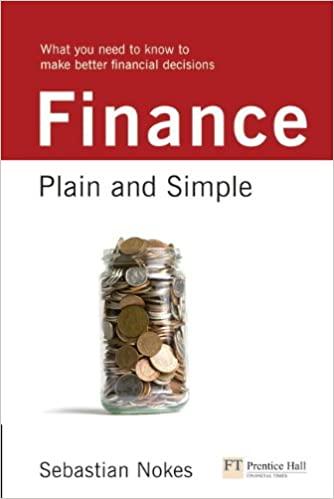6.Suppose that in January 2006 Kenneth Cole Productions had sales of $ 514 million, EBITDA of $ 59.8 million, excess cash of $ 94 million, $ 4.6 million of debt, and 23 million shares outstanding. Use the multiples approach to estimate KCP's value based on the following data from comparable firms:


Data Table (Click on the following icon in order to copy its contents into a spreadsheet.) Price Book Enterprise Value Sales Ente el TDA Average 1.06 15.01 + 51% Enterprise Value EBITDA 8.49 + 27% - 22% 2.84 + 186% - 61% Maximum + 106% Minimum - 42% - 56% Print Done Suppose that in January 2006 Kenneth Cole Productions had sales of $514 million, EBITDA of $59.8 million, excess cash of $94 million, $4.6 million of debt, and 23 million shares outstanding. Use the multiples approach to estimate KCP's value based on the following data from comparable firms: :. a. Using the average enterprise value to sales multiple in the table above, estimate KCP's share price. b. What range of share prices do you estimate based on the highest and lowes te based on the highest and lowest enterprise value to sales multiples in the table above. c. Using the average enterprise value to EBITDA multiple in the table above, estimate KCP's share price. d. What range of share prices do you estimate based on the highest and lowest enterprise value to EBITDA multiples in the table above? a. Using the average enterprise value to sales multiple in the table above, estimate KCP's share price. KCP's share price using the average enterprise value to sales multiple will be $ . (Round to the nearest cent.) b. What range of share prices do you estimate based on the highest and lowest enterprise value to sales multiples in the table above. The highest price will be $ . (Round to the nearest cent.) The lowest price will be $ . (Round to the nearest cent.) c. Using the average enterprise value to EBITDA multiple in the table above, estimate KCP's share price. KCP's share price using the average enterprise value to EBITDA multiple will be $ . (Round to the nearest cent.) d. What range of share prices do you estimate based on the highest and lowest enterprise value to EBITDA multiples in the table above? The highest price will be $ . (Round to the nearest cent.) The lowest price will be $ . (Round to the nearest cent.) Data Table (Click on the following icon in order to copy its contents into a spreadsheet.) Price Book Enterprise Value Sales Ente el TDA Average 1.06 15.01 + 51% Enterprise Value EBITDA 8.49 + 27% - 22% 2.84 + 186% - 61% Maximum + 106% Minimum - 42% - 56% Print Done Suppose that in January 2006 Kenneth Cole Productions had sales of $514 million, EBITDA of $59.8 million, excess cash of $94 million, $4.6 million of debt, and 23 million shares outstanding. Use the multiples approach to estimate KCP's value based on the following data from comparable firms: :. a. Using the average enterprise value to sales multiple in the table above, estimate KCP's share price. b. What range of share prices do you estimate based on the highest and lowes te based on the highest and lowest enterprise value to sales multiples in the table above. c. Using the average enterprise value to EBITDA multiple in the table above, estimate KCP's share price. d. What range of share prices do you estimate based on the highest and lowest enterprise value to EBITDA multiples in the table above? a. Using the average enterprise value to sales multiple in the table above, estimate KCP's share price. KCP's share price using the average enterprise value to sales multiple will be $ . (Round to the nearest cent.) b. What range of share prices do you estimate based on the highest and lowest enterprise value to sales multiples in the table above. The highest price will be $ . (Round to the nearest cent.) The lowest price will be $ . (Round to the nearest cent.) c. Using the average enterprise value to EBITDA multiple in the table above, estimate KCP's share price. KCP's share price using the average enterprise value to EBITDA multiple will be $ . (Round to the nearest cent.) d. What range of share prices do you estimate based on the highest and lowest enterprise value to EBITDA multiples in the table above? The highest price will be $ . (Round to the nearest cent.) The lowest price will be $ . (Round to the nearest cent.)








